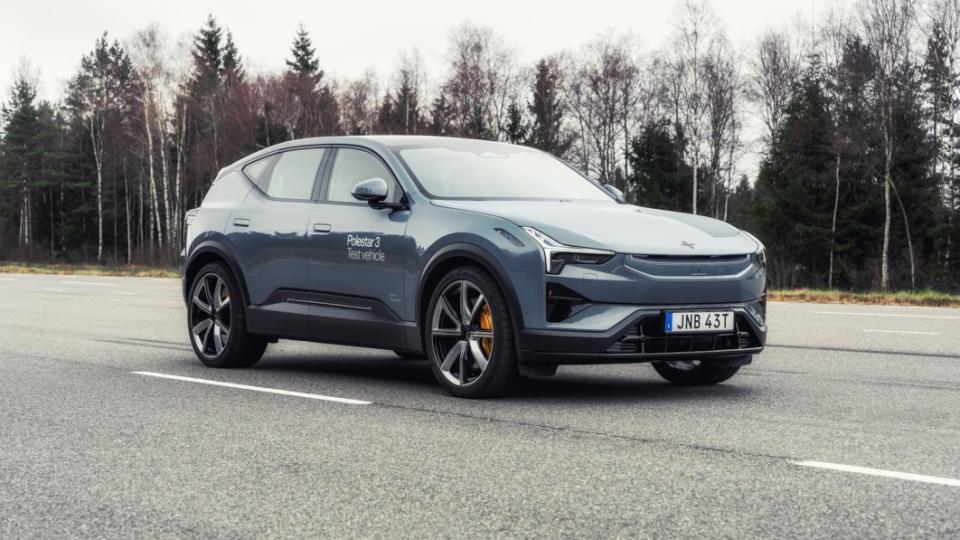2024 Polestar 3 Preview Drive Review: Polestar's real future starts here

SANDHULT, Sweden — To get an idea of how Polestar will evolve in the coming years, look no further than the 3. Referred to as the brand’s core, it inaugurates an approach to design, technology, and handling that will trickle down to future models. It also takes Polestar out of the tiny pool of carmakers that don’t offer an SUV, so it will play a crucial role in helping the young Volvo off-shoot increase its sales on the American market.
What took Polestar so long to enter the SUV segment? I asked company CEO Thomas Ingenlath.
“Somewhere you have to start the company, and you cannot have everything at the same time. If we had just the 3, people might come up and ask me, ‘Thomas, wouldn’t it be nice to have a more affordable Polestar?’ That’s the 2. Once you have everything it’s great, but you have to build it up bit by bit.”
Polestar unveiled the 3 in October 2022, so we already know what the SUV looks like; no surprises here and no camouflage needed. Visually, it represents a shift away from the 2, which is distinctly Volvo-like, the result of it being based on a Volvo design concept that never made it to production. The Polestar 3, then, represents the future, with its design language already permeating other models, including an upcoming sport sedan called 5.
While designers are tugging Polestar out of Volvo’s shadow, they’re not severing all ties.


Polestar 3 and Volvo EX90
“The 3 is uniquely Polestar, and with the 4, 5, and 6 we’re really departing from Volvo, but we also like to keep a little bit of a bridge to Volvo as a family because there is a lot to gain,” said Maximilian Missoni, the head of Polestar’s design department, adding that people trust Volvo. “The connection to Volvo is a good thing; it sets Polestar apart from many other newcomers that don’t have this kind of trust.”
It’s a similar story inside, where specific styling cues (such as the wood trim on the dashboard) and a generally minimalist approach to design give off a distinct whiff of Volvo-ness. What separates the EX90 and the 3, then? How do you avoid automotive cannibalism considering both EVs are built on the same basic SPA2 architecture, pegged in the same price bracket, and feature relatively close dimensions?
“We’re focused on driving dynamics, while Volvo is focused on versatility,” Missoni said, adding, “We share a focus on safety.”
You can see this differentiation in the choice of body style. While the EX90 – like its gas-powered counterpart, the XC90 – will be offered with three rows of seats, the 3 has only two rows and was shaped accordingly with a low, sloping roof line. As a bonus, making the 3 two-row-only gives rear-seat passengers plenty of space.

Polestar developed its own user interface to further set itself apart from Volvo; it went as far as creating its own icons for functions like the heated seats and the various warning messages, and it designed a font called Polestar Unica. Android-powered and displayed on a portrait-oriented 14.5-inch touchscreen, the infotainment system relies on tiles rather than lists to convey information clearly and quickly. That’s good thinking on Polestar’s part because there’s not much in the way of physical buttons in the 3. There’s a volume knob, thankfully, but even simple tasks like opening the glovebox require tapping the screen. I’m told the tradeoff is that owners will have the option of locking the glovebox by setting a password.

 Yahoo Autos
Yahoo Autos 
